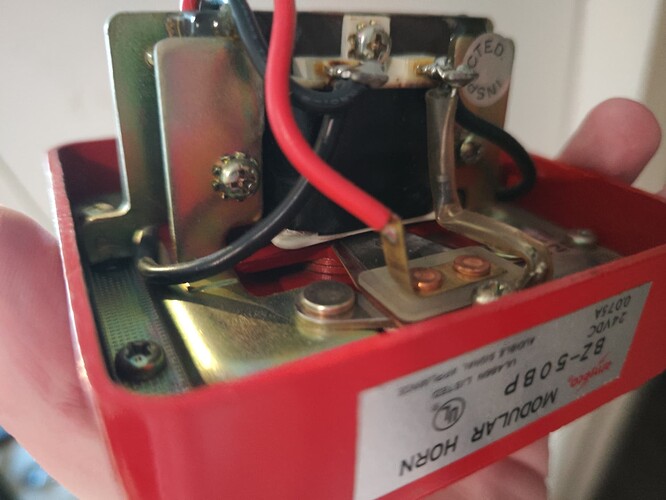This may not be the most accurate explanation, but I’ll try my best:
Imagine there’s a small tab attached to the diaphragm, then that tab goes to a a coil (electromagnet), when you apply power, the coil will pull the tab (and therefore the diaphragm with it). Now, picture that tab getting pulled up and pushed down 60 times per second (at least on AC powered horns, not counting the period between two oscillations where the voltage goes to zero).
Boom. That’s more or less how a AC horn works. Aquarium air bubbler pumps work on the same principle.
Now for DC powered horns, things are a little different because there’s no such thing as frequency there.
Instead (most) DC powered horns work on the same principle as AC horns but with a contactor added that cuts power to the coil when the diaphragm gets pulled up, in turn causing the diaphragm to drop thus closing back up the contactor, then the coil energizes back, and the cycle repeats.
(this is true to most DC powered horns, there’s some DC horns that uses a circuit to generate a AC waveform out of a DC input, the FHF HGK horns rely on this.)
Now all of this is for “vibrating” horns (sometimes referred to as “Vibratone horns”, some horns, however, instead of using a coil, use a motor attached to a cam to push the diaphragm up and down, one notable example is the Amseco BZ-54VT motor horn.
Here’s a picture of (coincidentally) my Amseco BZ-50P, you can just faintly see the contact that cuts power when the diaphragm is pulled by the coil, if you look closely you can also see the plunger that connects the coil to the diaphragm.
